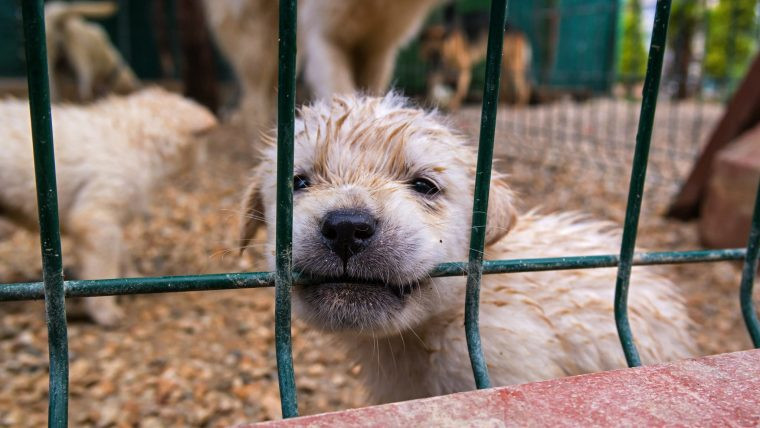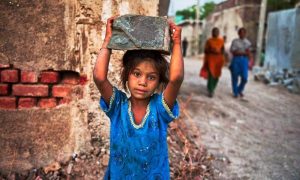Table of Contents
Introduction
This article on Animal Laws in India discusses all types of laws relating to animals and their rights. Animals include wild animals to domestic animals, cattle to foreign and migratory animals. It is a compendious piece of legal materials as it comprises animal related laws containing such as acts, relevant provisions of other statutes, rules and orders passed by the state enactments and rules and judicial decisions.
In India, millions of animals are killed, beaten, enslaved, mutilated into tiny pieces so that humans can consume them. They are caged in tiny iron boxes and always kept tied with ropes or heavy chains in the interest of science. Animals are even burned alive, blinded, harshly tested, mutilated alive and they are skinned alive so that humans can use their skins. The major legislative enactments with regard to protection of rights of animals in India are Prevention of Cruelty Act,1960 and Wildlife Protection Act, 1972.
What amounts to Cruelty to Animals
The scope of Cruelty among animals is very wide. It starts from a basic teasing for fun or entertainment and keeps on turning atrocious. The use of animals in entertainment industry, in circuses and in various fights and making them do activities is quite a physical and mental torture inflicted on them. Use of animals as food items, in transportation and in making accessories also tantamounts to Cruelty.
Following the California Penal Code, animal cruelty is defined as “Baleful or deliberate maiming, torture or wounding of a living animal and stated that any person who overworks, abuse, torments, depriviation of essential food, drink or shelter, brutally beating and mutilating an animal shall be guilty of assault and murder.”
Forms Of Animal Cruelty
Sexual Abuse (Bestiality):
Intercourse between a human and a non-human which is against the nature is referred to as bestiality. It generally refers to a human having sexual relations with an animal in a demeaning manner. As per as Section 377 of IPC:
“Whoever voluntarily has carnal intercourse against the order of nature with any man, woman or animal, shall be punished with imprisonment for life, or with imprisonment of either description for a term which may extend to ten years, and shall also be liable to fine.”
Physical Domestic Abuse
It is a form of animal abuse in which the brutality against the animals is completely deliberate. The goal is to inflict serious harm, excruciating agony, and emotional distress on the animals. Prevention of Cruelty to Animals Act (1960) provides a 3 year jail term or Rs 25,000 fine or both for abusing animals.
Simple Neglect and Animal Boarding
Animal hoarding is defined as having an abnormally large number of pets. Animal hoarders are animal enthusiasts who find it difficult to let go of their pets. It is more of a mental illness that leads people to harm their animals. It includes things like malnutrition, thirst, illness, infections, poor veterinary treatment, long-term chaining in extreme temperatures etc.
Organized Animal Abuse
Organized Animal fighting includes dog fighting, bullfighting, and cockfighting etc. It is a form of organized animal maltreatment that is primarily done for entertainment purposes. Animal fighting is prohibited in many countries because it often involves gambling, money laundering, and drug trafficking.
Sections 428 and 429 of the IPC provide that anybody who causes harm, injury, death, poisoning, or maiming to animals or cattle with the intent of harming, injuring, killing, poisoning, or maiming them will be punished by a fine or imprisonment of up to 5 years or both.
Experiments On Animals
Researchers use non-human animals in laboratories to conduct tests, experiments, and research on a variety of biological problems. New medications, treatment methods and surgical techniques are tested on animals to ensure that they are safe for use in humans.
The Drugs and Cosmetics (Fifth Amendment) Rules, 2014 prohibits the importation of cosmetic products that had been tested on animals.
Manipulation of genetics
In genetic engineering, animals are created just to meet human needs and are treated as if they were nothing more than possessions for humans. Such animals have no right to life.
The Environment (Protection) Act, 1986 regulates genetically modified organisms and their products.
Constitutional Provisions Relating To Animals
The Constitution of India 1960 makes it a “Solemn Duty of every citizen of India to protect and improve the natural environment which includes forests, lakes, rivers and wildlife, and to have compassion for all living creatures.” This Constitutional duty of animal protection is supplemented by the Directive Principle of State Policy under Article 48A which states that: “The State shall endeavor to protect and improve the environment and to safeguard the forests and wildlife of the country.” It also gives the government recommendations for organizing agriculture and animal husbandry using new modern and scientific approaches rather than the old traditional ones
Similarly, Article 21 states that everyone has the right to life and cannot be deprived of life or personal liberty, unless established by law. The Supreme Court has stated that animals have legal rights under this article during the famous Jallikattu (bull taming) case.
Also in Animal Welfare Board of India v. A. Nagaraj, (2014) wherein it was observed that recognized freedom of animals are:
- freedom from hunger, thirst and malnutrition;
- freedom from fear and distress;
- freedom from physical and thermal discomfort;
- freedom from pain, injury and disease; and
- freedom to express normal patterns of behavior.
Article 51 A (g) of the Constitution is considered to be the “Magna Carta Of Animal Rights” in India and included the right to life of animals under Article 21 to value their lives as much as humans.
In 1954, the Supreme Court held that animal sacrifices for religious purposes are important to exercise one’s religion and such rights are protected by Article 25 of the Indian Constitution, and went on to elucidate on this in its judgment viz. Ratilal Panachand Gandhi and Others v. State of Bombay and Others and held that:
“A religion is not merely an opinion, doctrine, or belief. It has its outward expression in acts as well religious practices or performances of acts, in pursuance of religious belief are as much a part of religion as faith or belief in particular doctrines.”
Right To Religion & Animal Protection
The Prevention of Cruelty to Animals Act, 1960 prevents people from inflicting unnecessary pain or suffering on animals (including birds), and prevents cruelty towards animals. However, “Section 28 of the Act states that it is not an offence to kill any animal in a manner which is required by the religion of any community.”
As per Article 25 of Indian Constitution All people have a right to freely practice any religion of their choice. However, this right is not absolute and can be restricted for reasons such as public order, morality and health.
In Commissioner of Police v. Acharya Jagadishwarananda, the Supreme Court has stated that the protection of religion under Article 25 includes protection for religious rituals, ceremonies and modes of worship which are a part of religion. However, a religious practice is considered to be part of a religion only if the practice is found to be an essential and integral part of religion.
Thus, in order to be protected as a religious right animal sacrifices will have to be considered by the Court as an essential religious practice with reference to a particular religion. This may be decided by the Court after looking into the doctrine of the particular religion, what the community regards as essential to the religion, and other evidence.
Orissa High Court has recently delivered a judgment which banned animal and bird sacrifices during the ‘Chatar Yatra’ festival, which involves thousands of animal sacrifices to please the deity Maa Manikeshwari that is celebrated in the Kalahandi District of Odisha every year. The Court stated that the act of sacrificing animals in temples does not reflect religious beliefs and ideas. The rituals attached to animal/bird sacrifice reflect only cruelty, superstition, fear and barbarism and have nothing to do with either religion or culture.
Animal Welfare Schemes In India
It is the duty of the state to make policies and programmes for the welfare and protection of animals guided by the directive principles of the state policies. The legislature has the duty to reform such policies and improve the environment of the Commercial sector of the animal industry and regulate animal abuse therein. Some of these policies are:
Rashtriya Gokul Mission
The Rashtriya Gokul Mission (RGM) has been implemented for the development and conservation of indigenous bovine breeds since December 2014. The scheme is also continued under umbrella scheme Rashtriya Pashudhan Vikas Yojna from 2021 to 2026 with a budget outlay of Rs.2400 crore.
Its Objective are:
- To improve productivity of Bovines in order to increase milk production in a sustainable manner using advanced technologies.
- To propagate use of high genetic merit bulls for breeding purposes.
- To enhance Artificial insemination coverage through strengthening breeding network and delivery of Artificial insemination services at farmers doorstep.
- To promote indigenous cattle and buffalo rearing and conservation in a scientific and holistic manner.
National Livestock Missions
The main focus of this scheme is on entrepreneurship development and breed improvement in poultry, sheep,goat and piggery including feed and fodder development. The scheme is implemented with the following three Sub-Missions:
- Sub-Mission on Breed Development of Livestock and Poultry.
- Sub-Mission on Feed and Fodder development.
- Sub-Mission on Extension and Innovation
Livestock Health & Disease Control scheme
It aims for the improvement of the animal health sector by way of implementation of prophylactic vaccination programmes against various diseases of livestock and poultry, capacity building, disease surveillance and strengthening of veterinary infrastructure.
National Animal Disease Control Programme (NADCP)
It is a flagship scheme launched by Hon’ble Prime Minister in September, 2019 for control of Foot & Mouth Disease and Brucellosis by vaccinating 100% cattle, buffalo, sheep, goat and pig population for FMD and 100% bovine female calves of 4-8 months of age for brucellosis with the total outlay of Rs.13, 343.00 crore for five years from 2019-20 to 2023-24.
Animal Husbandry Infrastructure Development Fund (AHIDF)
The Hon’ble Prime Minister has announced for setting up of Rs. 15000 crore Animal Husbandry Infrastructure Development Fund (AHIDF) under Atma Nirbhar Bharat Abhiyan stimulus package.
- To help increase milk and meat processing capacity and product diversification thereby providing greater access for unorganized rural milk and meat producers to organized milk and meat markets.
- To make available increased price realization for the producer.
- To make available quality milk and meat products for the domestic consumer.
- Develop entrepreneurship and generate employment.
- To promote exports and increase the export contribution in the milk and meat sector
Conclusion
The concern for the rights of animals is a multifaceted issue, having important scientific, ethical, economic and political dimensions. Time and again the Supreme Court and various High Courts have shown compassion for animals and have tried to protect and promote animal rights. Also as trustees of nature we humans should also take a step ahead to create a safe environment for animals and comprehend the fact that animals too have inherent rights.



